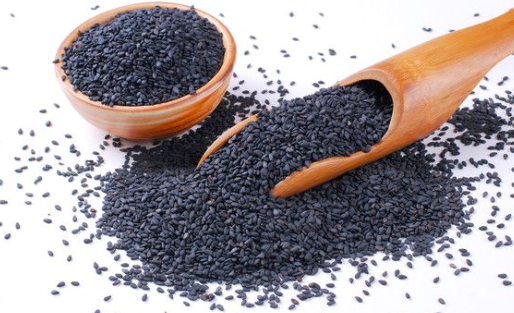Unlocking the Rich Flavors of Asian Cuisine with Sesame Oil
Sesame oil stands as one of the most distinctive and aromatic ingredients in Asian cooking, bringing an unmistakable nutty depth to dishes that few other ingredients can match. This golden elixir, extracted from toasted sesame seeds, has been a cornerstone of Asian culinary traditions for thousands of years. Whether you're crafting a simple stir-fry or preparing an elaborate dressing, understanding how to use sesame oil can transform your cooking from ordinary to extraordinary.
The beauty of sesame oil lies in its versatility and potency. A few drops can elevate a dish from bland to brilliant, infusing it with a rich, toasted flavor that becomes the signature note of many Asian recipes. As we explore the various applications of this prized ingredient, you'll discover why it's considered liquid gold in kitchens across Asia and beyond.
Understanding Different Types of Sesame Oil
Light vs. Toasted Sesame Oil
Light sesame oil, pressed from raw sesame seeds, offers a mild, neutral flavor perfect for cooking at higher temperatures. It's lighter in color and less intense than its toasted counterpart, making it ideal for general cooking purposes. Toasted sesame oil, on the other hand, is made from roasted sesame seeds and boasts that characteristic deep amber color and intense nutty aroma. This is the variety most commonly used for seasoning and finishing dishes.
The production process significantly influences the oil's flavor profile and best uses. Light sesame oil can withstand high heat cooking methods, while toasted sesame oil is best added at the end of cooking or used raw to preserve its delicate flavors and aromatic compounds.
Quality Indicators and Storage
High-quality sesame oil should have a clear, rich color and fresh, nutty aroma without any rancid notes. When storing sesame oil, keep it in a cool, dark place to prevent oxidation. While light sesame oil can last up to a year, toasted sesame oil is best used within six months of opening to ensure optimal flavor. Always check for signs of rancidity before use, such as off-putting smells or unusual thickness.
Essential Cooking Techniques with Sesame Oil
Stir-Frying and Sautéing
When it comes to stir-frying, sesame oil can be used in two ways. Light sesame oil works well as a cooking medium, providing a subtle nutty undertone to vegetables and proteins. For the signature Asian flavor, add a few drops of toasted sesame oil just before serving. This technique ensures you get the full aromatic impact without burning the oil's delicate compounds.
The key to successful stir-frying with sesame oil is temperature control. Light sesame oil can handle medium-high heat, but toasted sesame oil should never be used for high-temperature cooking as it can become bitter and lose its prized aromatic properties.
Marinades and Dressings
Sesame oil excels in marinades and dressings, where its intense flavor can fully develop and coat ingredients. For marinades, combine toasted sesame oil with soy sauce, rice vinegar, and fresh ginger to create a balanced flavor profile. When making dressings, start with a small amount of sesame oil and adjust to taste - remember, its flavor is potent and can easily overwhelm other ingredients.
A classic Asian vinaigrette might combine two parts rice vinegar with one part toasted sesame oil, a touch of soy sauce, and a hint of honey. This versatile dressing works wonderfully on salads, noodles, or as a dipping sauce for dumplings.
Creative Applications and Flavor Combinations
Asian-Inspired Salad Dressings
Sesame oil forms the foundation of numerous Asian-inspired salad dressings. Create a vibrant dressing by whisking together toasted sesame oil, rice vinegar, grated ginger, and a touch of honey. This combination works particularly well with crisp vegetables like cucumber, carrots, and cabbage. For added depth, incorporate miso paste or tahini into your dressing base.
Experiment with different acid components like yuzu juice or lime to create unique flavor profiles. The key is maintaining balance - sesame oil should complement rather than dominate the other ingredients.
Noodle and Rice Seasonings
Transform plain noodles or rice into flavorful dishes with a careful application of sesame oil. A few drops of toasted sesame oil tossed with hot noodles creates an instant flavor boost. For cold noodle dishes, combine sesame oil with chili oil, soy sauce, and rice vinegar for a more complex taste profile.
Rice dishes benefit from a light drizzle of sesame oil just before serving. This simple addition can elevate plain steamed rice into an aromatic side dish that complements any Asian-inspired meal.
Frequently Asked Questions
What's the best way to store sesame oil?
Store sesame oil in a cool, dark place away from direct sunlight and heat. Once opened, keep it in the refrigerator to extend its shelf life. Properly stored sesame oil can last up to six months for toasted varieties and up to a year for light sesame oil.
Can I substitute other oils for sesame oil in recipes?
While you can substitute other neutral oils for light sesame oil in cooking, there's no true substitute for the distinct flavor of toasted sesame oil. If you must replace it, try using a combination of neutral oil and ground toasted sesame seeds to approximate the nutty flavor.
How much sesame oil should I use in my cooking?
Start with small amounts when using sesame oil, especially the toasted variety. For stir-fries and noodle dishes, begin with ½ to 1 teaspoon and adjust to taste. In dressings, use about 1-2 teaspoons per cup of other liquids. Remember, you can always add more, but it's difficult to correct an overseasoned dish.

 EN
EN
 DA
DA
 AR
AR
 NL
NL
 FI
FI
 FR
FR
 DE
DE
 EL
EL
 HI
HI
 IT
IT
 JA
JA
 KO
KO
 NO
NO
 PL
PL
 PT
PT
 RU
RU
 ES
ES
 SV
SV
 TL
TL
 ID
ID
 SR
SR
 UK
UK
 VI
VI
 HU
HU
 TH
TH
 TR
TR
 FA
FA
 AF
AF
 MS
MS
 GA
GA
 MK
MK
 HY
HY
 KA
KA
 BN
BN
 LA
LA
 MN
MN
 NE
NE
 MY
MY
 KK
KK
 UZ
UZ
